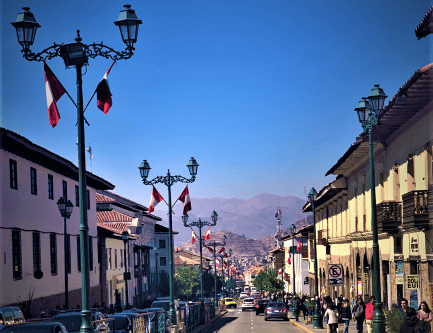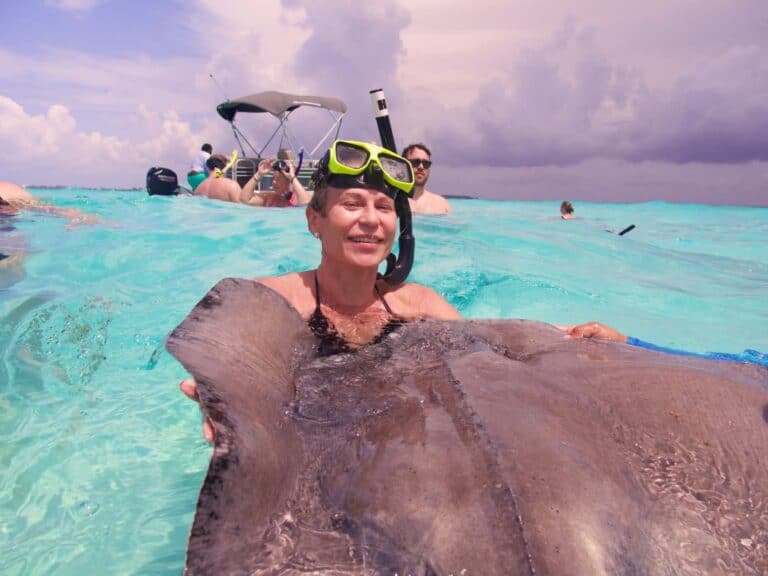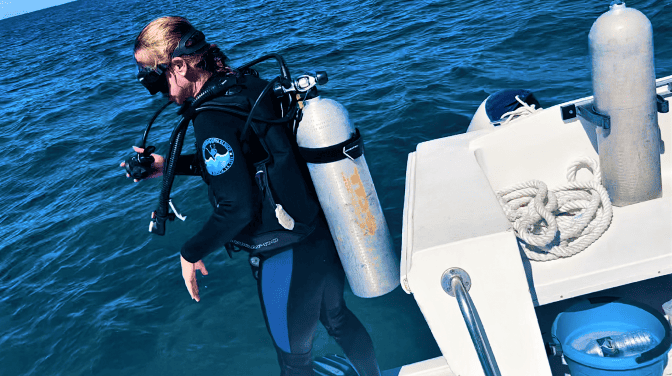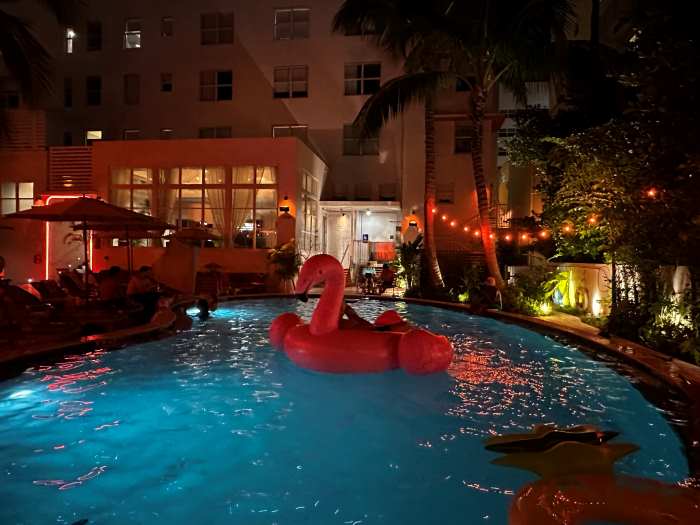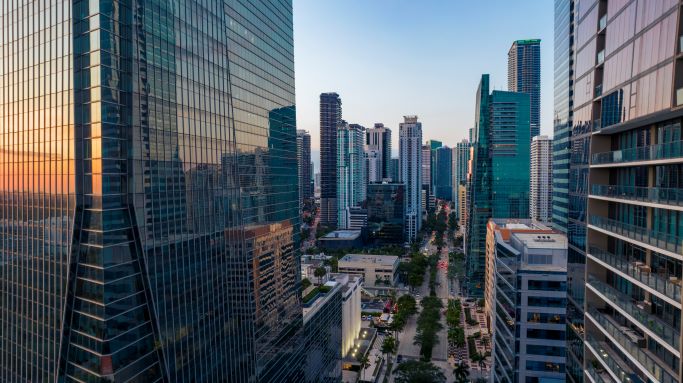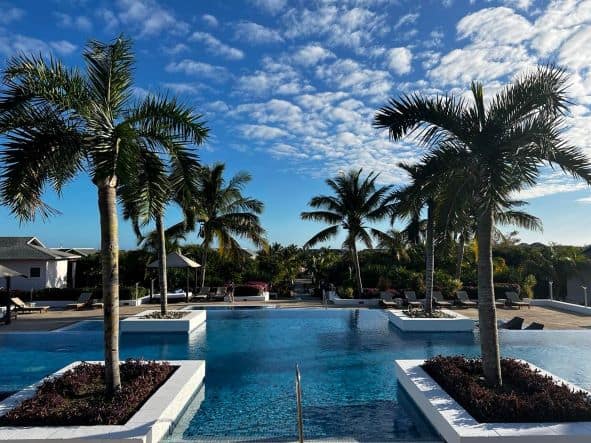I spent some time in Cusco before I started the Inca Trail, which is a wonderful and fun city, it turns out! However, if you’re a solo female traveler like me, it’s natural to ask the question, “Is Cusco safe?”
The gateway to the Inca Trail is in itself a dream destination for many adventurers loving Peru and South America, and as personal safety is at the top of most solo travelers’ lists, I assume you are not very different.
I had lots of fun here before the trek while adjusting to the altitude; I even did a drop-in salsa class in a dance studio I happened to pass by one evening!
Let me share my best tips for Cusco safety before your trip in 2025 so you can travel confidently and enjoy every moment.

Safety Overview of Cusco

First, you need to know that Cusco has built a strong reputation as a safe destination for tourists, including solo female travelers.
According to recent safety ratings, Cusco consistently scores higher than many other cities in Latin America when it comes to tourist safety.
In general, violent crime is rare, and the city keeps up a visible police presence, especially in the more tourist-heavy areas.
That being said, it’s always wise to be aware of your surroundings, no matter where you travel – petty crime is always a possibility, and solo travelers are particularly vulnerable to the consequences if something should happen.
Pickpocketing in crowded areas can be an issue, and pickpockets are generally more active at night than during the daytime.
As someone who loves wandering through cobbled streets and mingling with locals, I’ve always found that a little awareness goes a long way toward staying safe and feeling secure.
Comparing it to other Peruvian cities, Cusco ranks among the safest, but as with any destination, a bit of precaution is key.
Also read: Review Inca Trail Trek 4 Days: My Epic Inca Trail Experience
Is Cusco Safe for Solo Female Travelers?
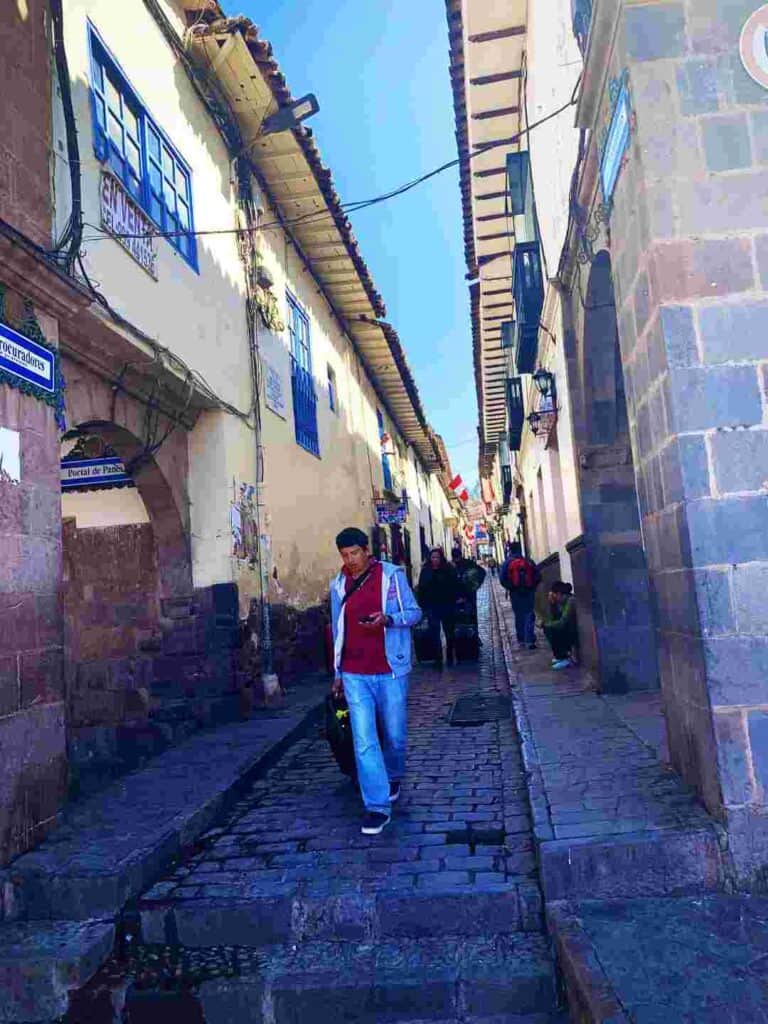
If you’re a solo female traveler planning a trip to Cusco, you are probably wondering about a few extra things that our male counterparts tend not to worry about.
My overall experience in Cosco was that I felt safe, and nothing bad happened. I did not experience catcalling or any unwanted attention in the streets, restaurants, or anywhere really.
I also felt safe wandering the city at night, but I did stick to well-lit areas where there were other people and that did not feel deserted.
I also stayed at a hostel called Kokopelli, which was really nice and within walking distance of “everything.” As Cusco is a popular destination for travelers, if you choose a hostel, you will have many possible new friends to hang with.
So, from my experience, Cusco is a fantastic city for solo travelers, which is in accordance with the statistics. With a few precautions, you’ll feel empowered and safe during your stay here.
Safety Tips Specific to Solo Female Travelers
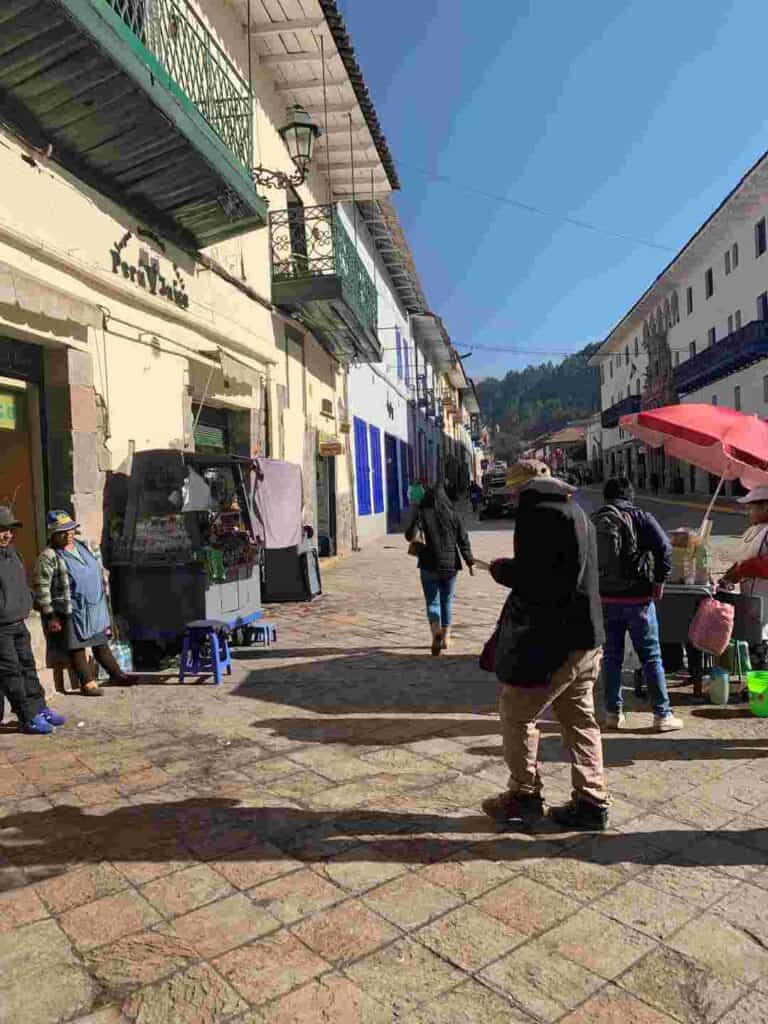
Cusco is generally safe, but staying aware of your surroundings is key, like anywhere.
First and foremost, you always need to trust your instincts. Whenever something feels off, or you don’t feel as safe and secure as you should, never stay in a situation that does not feel good.
In order to help your instincts become accurate, you also should research Cusco before you go and ask for advice from people you meet when you get there.
The always-applying “rules” are to not get drunk, only use registered taxis or Ubers, and stay away from deserted areas at night.
Stick to well-lit, busy streets, especially at night, and if you’re ever in doubt, don’t hesitate to ask a local for help or recommendations.
When you meet nice new friends, it is a good rule of thumb not to tell them things like where you live and maybe not say that you are traveling alone.
One of my best tips? Always carry a portable charger. Your phone is your best friend in a new place – from navigation to staying in touch with people, you want to make sure it’s always powered up.
Another thing you can do is to let someone at your hotel, hostel, or back home know where you’re heading for the day. It’s a simple step that adds a layer of safety in the sense that someone might raise the alarm if you fall off the grid.
Also read: 17 Incredible Famous Landmarks In Peru That Are a Must-See!
8 Essential Safety Tips for Women in Cusco
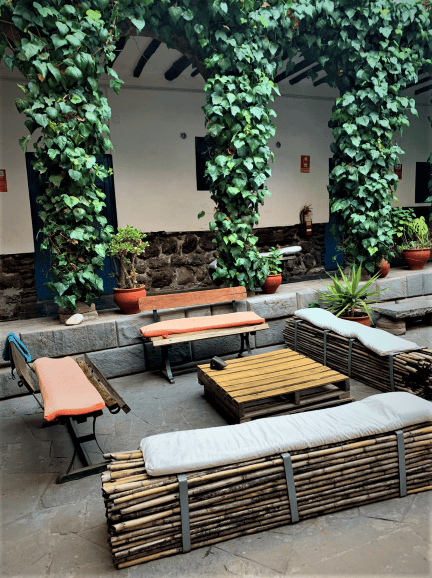
As a woman who’s personally walked the charming streets of Cusco, I understand how exciting yet slightly unnerving it can feel to be in a new city.
Cusco safety for tourists (and not only) is a priority, but it doesn’t mean you should let fear take away from your adventure.
So, here are eight safety tips, based on my own experiences, that can help you feel more confident while exploring this beautiful, history-rich city.
P.S. These tips aren’t meant to scare you. But having a few safety strategies in place can make all the difference in ensuring your trip is full of joy, not stress.
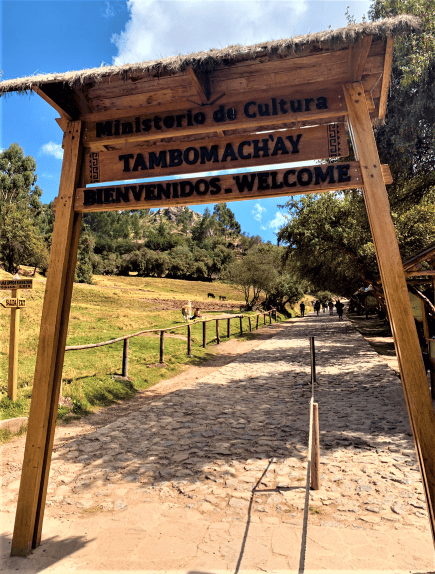
1. Stay in Well-lit, Populated Areas
It might sound simple, but sticking to well-lit streets, especially at night, makes a huge difference.
Cusco has its fair share of winding alleys and quieter spots—beautiful by day, but they can feel a bit too quiet at night.
The main plazas and busier streets are not only safer, but you’ll also get to enjoy the vibrant energy of the city well into the evening.
2. Secure your Belongings in Busy Public Places
Always keep an eye (and a hand) on your belongings, whether you’re browsing the local markets or just strolling through crowded areas.
Trust me, the hustle and bustle of San Pedro Market is captivating, but it’s also a prime spot for pickpockets in Cusco. Wearing a crossbody bag that zips closed or a money belt under your clothes can save you from a lot of headaches.
3. Don’t Carry Large Amounts of Cash
There’s no need to carry wads of cash when you’re out exploring. Most places in Cusco accept cards, and ATMs are easy to find if you need more money.
The less cash you carry, the less you have to worry about losing—or worse, being targeted for it.
This rule goes along with cards and your passport. If you can, leave them at your accommodation and make sure you carry a copy of your passport with you.
4. Be Cautious at ATMs and with Street Vendors
Speaking of ATMs, it can be a bit tricky in any city. Stick to ones inside banks or well-established areas, as they’re generally safer.
Word of advice: Always keep an eye on it while at the ATMs, and keep your credit cards in mind!
And when dealing with street vendors, it’s easy to get caught up in the charm of their handmade goods. However, always be mindful of distractions.
While most vendors are friendly, being aware of your surroundings will help you avoid any opportunistic hands reaching into your bag while you’re busy checking out alpaca scarves!
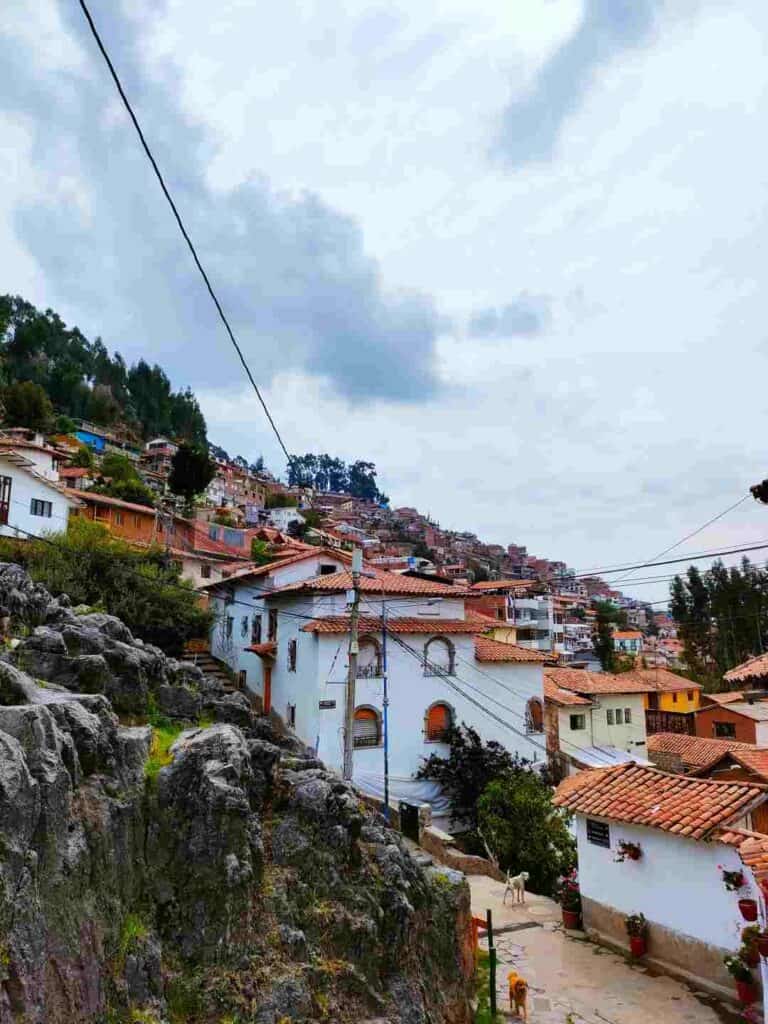
5. Learn Basic Spanish Phrases
A little effort with the local language goes a long way.
Phrases like “¿Cuánto cuesta?” (How much does it cost?) or “¿Dónde está la estación?” (Where is the station?) can make a world of difference.
Not only does it show respect to the local people, but it also helps you navigate situations more smoothly. Plus, it gives you confidence, which is key when you’re out exploring solo.
TIPS: Download Duolingo. This app is like a game and could help you learn a foreign language faster than you could even imagine.
6. Avoid being Flashy
Cusco is a place where simplicity shines. Keep your fancy jewelry, designer bags, and flashy gadgets tucked away.
The less you stand out, the less likely you’ll attract unwanted attention (and pickpockets).
Blending in doesn’t mean you have to sacrifice style, though. You can look chic and comfortable without the bling!
7. Use Authorized Travel Services and Licensed Taxis in Cusco
Always stick with licensed taxis or trusted ride services. In Cusco, many hotels and restaurants can arrange taxis for you, which gives you peace of mind.
If you’re catching one on the street, make sure it’s officially registered, as unauthorized taxis can be a bit of a gamble.
8. Trust your Instincts When Interacting with Strangers
This might be one of the most important tips—trust your gut.
If someone approaches you and something feels off, listen to that inner voice. Politeness doesn’t require you to ignore your instincts.
If you feel uncomfortable, remove yourself from the situation as calmly and quickly as possible. And as always, make sure you have really good travel insurance in case of bad luck or any medical emergencies.
Common Risks
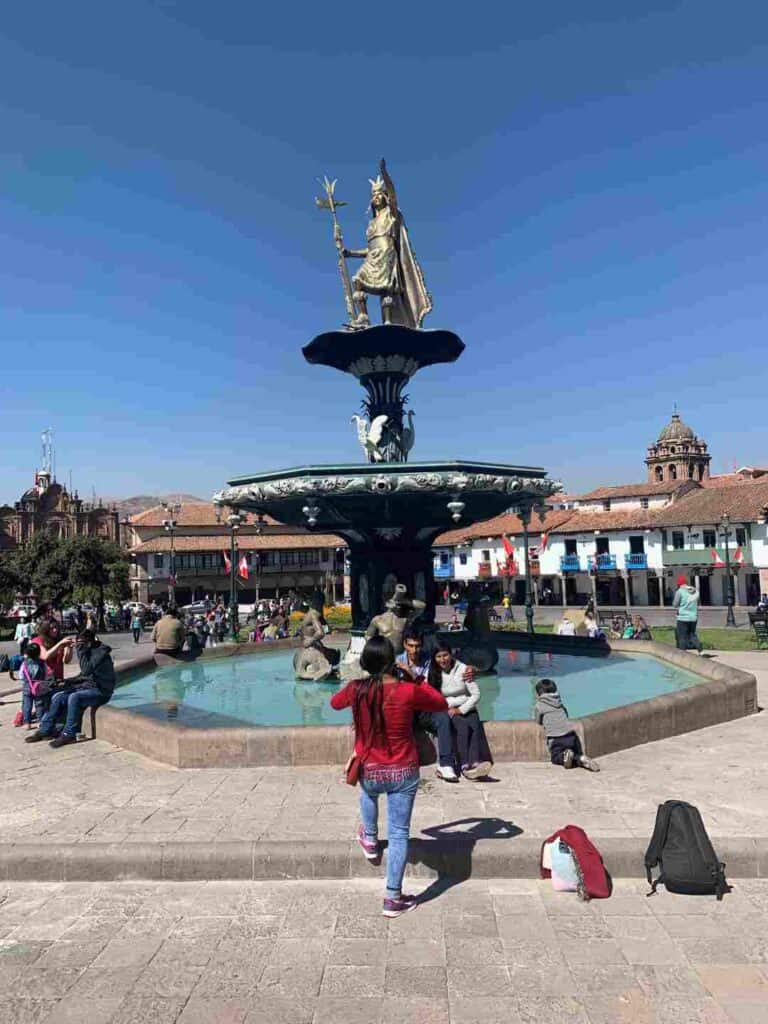
Pickpockets in Cusco are the most common issue, especially in busy areas like the Plaza de Armas and San Pedro Market, and although not dangerous, it is super annoying having to deal with your insurance company if you lose anything.
Avoid being a target in Plaza de Armas and other busy areas by keeping your belongings close to minimize your risk, using crossbody bags that zip up, and avoiding displaying valuable items like flashy jewelry or expensive gadgets.
Another thing to be generally aware of is unwanted attention, which can sometimes happen to solo female travelers, although I did not experience this at all in Cusco.
It’s usually harmless, but it can feel uncomfortable.
If that should happen, I recommend staying calm and assertive. Dont respond, and keep moving (and have an “I own this place” body language!). If you ever feel uneasy, move to a more populated area or step into a nearby shop or café.
It’s also wise to have a copy of your passport with you at all times in case you need ID – leave the original locked up at your accommodation.
Staying Safe in Crowds and Markets
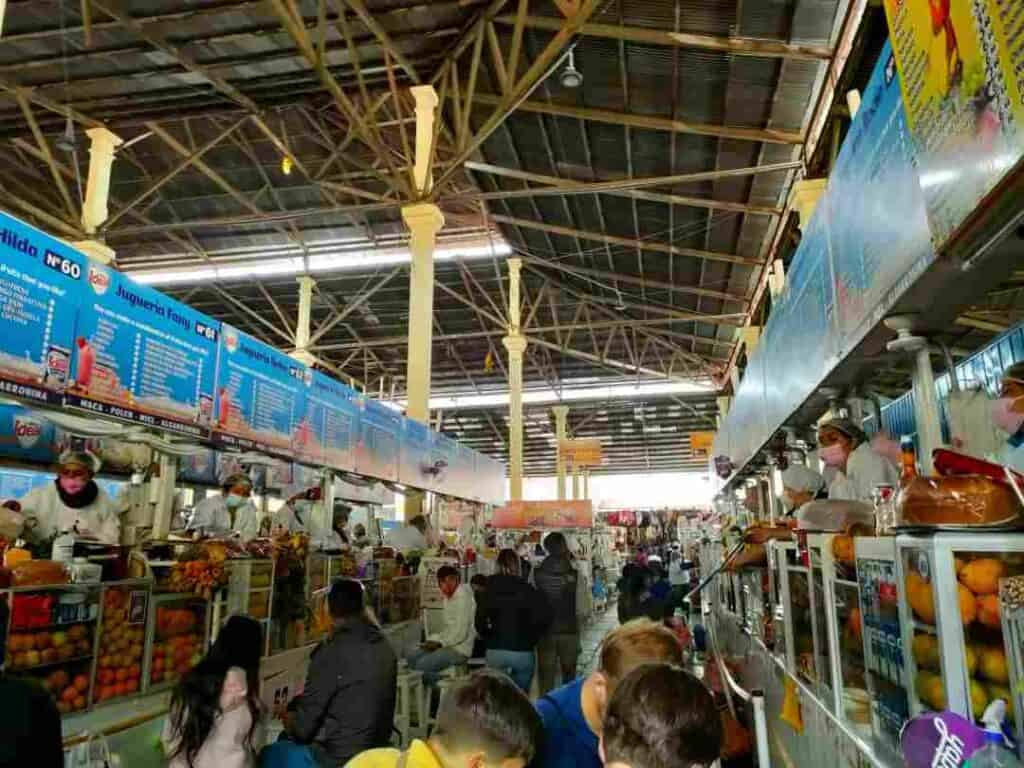
Places like San Pedro Market are incredible for picking up local goods, but they can get crowded, especially during peak hours.
Keep your bag in front of you, zipped up, and consider wearing it across your body for added security.
Safe Neighborhoods and Areas to Avoid in Cusco
There are a few areas you might want to stay away from when you are alone, especially at night. Let us look at the safe ones first.
Safe Areas: Plaza de Armas, Historic Center, San Pedro Market
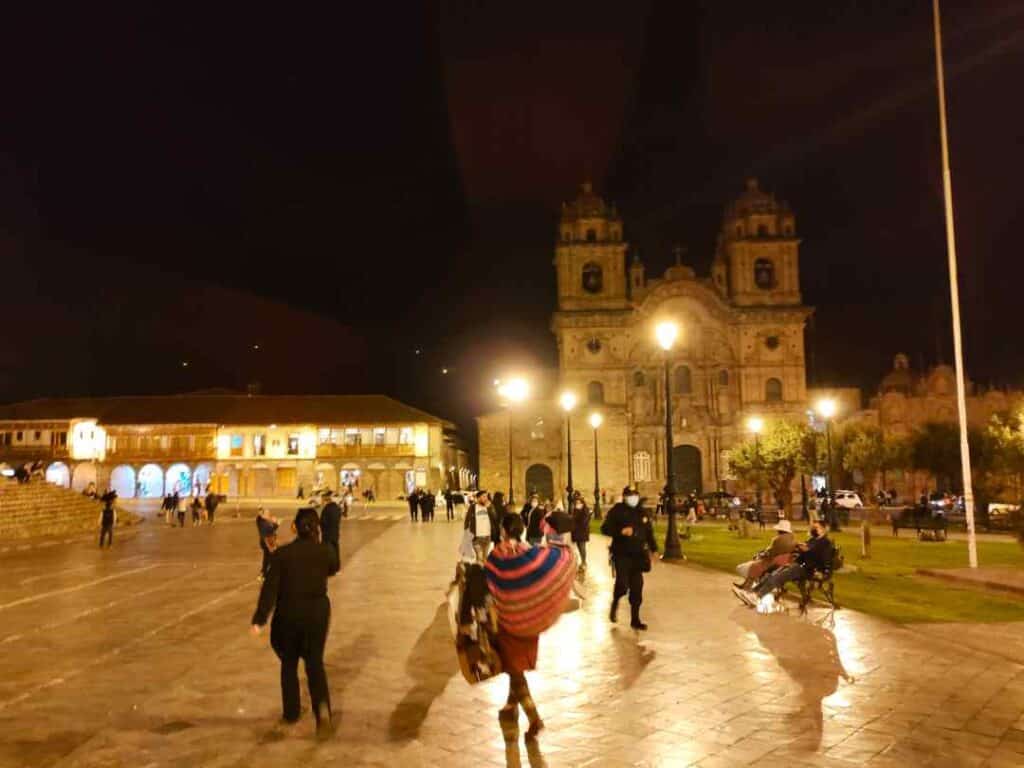
If you’re like me, you want peace of mind while exploring. When it comes to safe areas, stick to the well-known tourist spots and safe neighborhoods in Cusco.
San Blas is my personal favorite. It’s charming, artsy, and packed with cafés, galleries, and stunning views of the city. You can wander the cobbled streets here without worry, day or night.
Another great spot is Cusco’s Historic Center. Since tourists frequent it, there’s a solid police presence, and the streets are well-lit at night. You’ll feel safe exploring Plaza de Armas or grabbing a late-night bite.
If you’re staying a bit longer, consider the San Pedro Market area.
Top rated trek recommendations from Cusco:
Areas to Be Cautious In: Santiago District, Belén, outskirts of the city

Some neighborhoods, particularly further from the tourist zones, can feel a bit sketchy after sunset.
Santiago district and Belen are one of these areas.
They’re not necessarily dangerous during the day, but at night, it can feel a bit deserted, making it less ideal for solo travelers or those unfamiliar with the area.
Avoid walking around in neighborhoods like Huancaro or Progreso late at night.
These areas, while more affordable, tend to have fewer tourists and can feel less secure. It’s not about avoiding them entirely but knowing when and how to explore.
Staying Safe at Night in Cusco
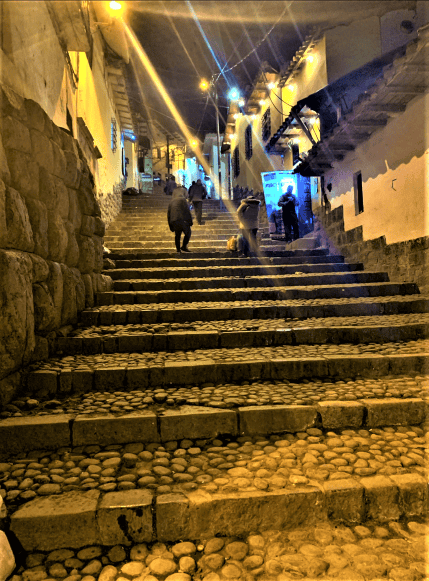
While Cusco is generally a safe city, especially around the historic center and Plaza de Armas, nighttime brings a few extra precautions to mind.
There are a few things I always make sure to do, and you should too.
- Stick to Well-Lit, Busy Areas
Although the heart of Cusco is lively and well-patrolled at night, I recommend avoiding the outskirts and any poorly lit or empty streets. It’s not worth taking the risk just to save a few minutes walking.
Stick to the areas where there are people around—it makes a huge difference in how safe you feel.
- Travel in Groups Whenever Possible
If you’re exploring Cusco with friends or fellow travelers, make the most of it and travel in groups at night. It’s one of the easiest ways to stay safe—there’s strength in numbers, after all.
When I’m on my own, I sometimes team up with others I meet at my accommodation or tours. It’s not just safer, but you’ll probably have more fun too!
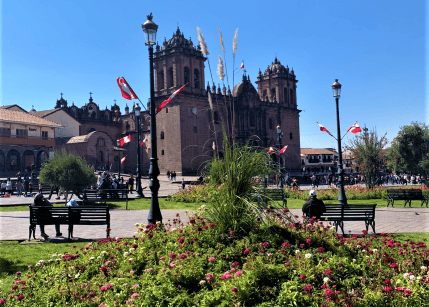
- Go Easy on the Drinks
I get it—Cusco is home to some amazing nightlife and local drinks like Pisco Sours, but moderation is key.
When you’re in a foreign city, being fully aware of your surroundings can prevent a lot of unnecessary trouble.
Keep your alcohol intake to a level where you still feel in control, and always be mindful of your drinks, especially in a crowded place.
- Trust Your Gut
If a bar, hotel, or taxi doesn’t feel right, don’t get in. For instance, I’ve passed on a few taxis traveling simply because something felt off, and although I can never be sure what would have happened, I always listen to my instincts.
Always trust those gut feelings. It’s better to wait a few more minutes for a ride that feels safe than to hop into one that doesn’t.
- ONLY Licensed Taxis in Cusco – Seriously!
If you’re grabbing a taxi, make sure it’s licensed.
In Peru, registered taxis display a registration sticker in the front window, and you’ll usually find the license plate number both inside and outside of the back window.
Unregistered taxis are not only more likely to overcharge you, but they could also pose a security risk and kidnapping you!
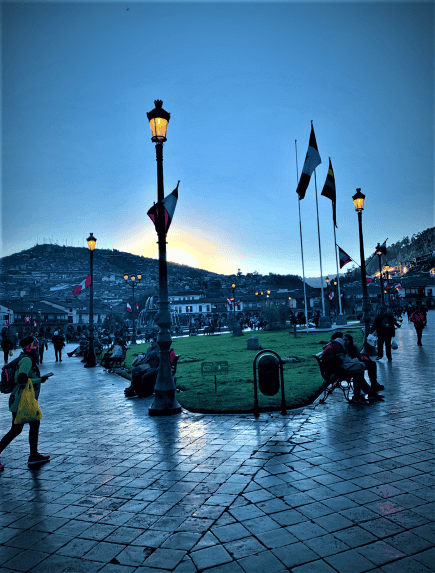
I’ve noticed that the safest way to get around at night is by Uber or licensed taxis in Cusco. A registered taxi is vetted (and traceable), and in Ubers, there is no money involved, and everything is registered online.
P.S. Always agree on the price before you hop into a licensed taxi in Cusco.
Once the ride is over, you’ve lost your chance to negotiate, and drivers can sometimes take advantage of that. Now, I always confirm the fare upfront, especially in non-Uber taxis.
- Uber – A Reliable Alternative
One thing that helped me feel at ease was using Uber in Cusco. It makes everything so much simpler.
You don’t have to worry about negotiating prices or wondering if your taxi is licensed. The app does that for you, and you can track your ride’s progress for extra peace of mind.
I relied heavily on Uber during my trip, and it made getting around so much easier. Plus, I knew what I’d pay ahead of time—no surprises.
Common Tourist Scams in Cusco and How to Avoid Them
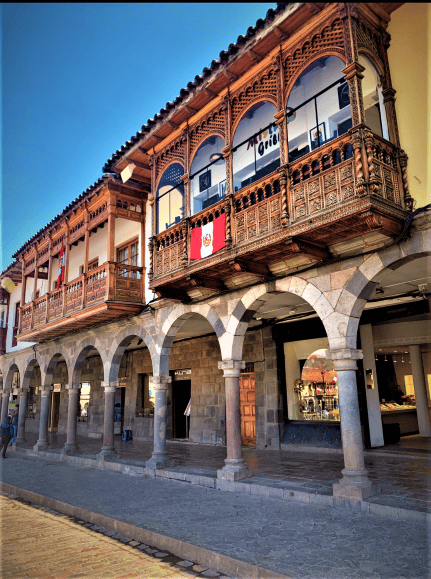
Traveling to Cusco is an incredible experience, but like most popular tourist destinations, it has its fair share of tourist traps.
While the city is generally safe, being aware of a few common scams can save you a lot of headaches.
I’ve personally seen these happen, so let me share what to look out for and how to stay one step ahead.
The Llama Photo Op Scam (It’s Not Always a Llama!)
One of the most iconic things to do in Cusco is take a picture with a llama or alpaca. But be cautious!
Some locals, especially in high-traffic tourist spots like the Plaza de Armas, will charge you a hefty fee after you’ve already snapped the photo.
And believe it or not, sometimes they’ll apparently swap the llama for a baby sheep, hoping you won’t notice in your excitement. I did not experience that, and it seems a bit weird, to be honest, but I was warned about it, so I am passing it on to you!
To avoid overpaying in these situations, always ask upfront how much a photo will cost, and make sure the animal is actually what you think it is.
Organized Begging
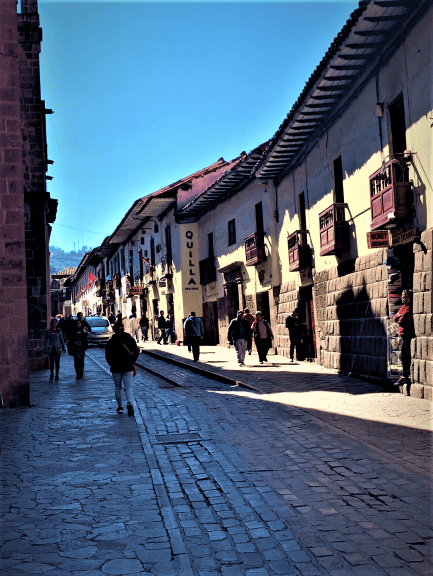
Another common scam involves groups of people, often children or elderly individuals, who approach you for money.
While it’s heart-wrenching to say no, many of these operations are unfortunately orchestrated by larger drug groups that don’t always give the money to those in need.
If you want to help, consider donating to reputable local organizations or giving food or water instead of cash.
Learn Basic Spanish to Avoid Overpaying
Knowing a few key phrases in Spanish will not only enhance your experience but also help you avoid getting scammed.
Some vendors and taxi drivers might see tourists as easy targets for inflated prices, especially if they think you can’t communicate well.
Even just knowing how to ask for prices or say “no, thank you” politely can make a big difference in how you’re treated.
So, what I always have on hand is my beloved Duolingo, which is free and helps you to navigate a foreign language easily and in a fun way!
Opportunistic Crime and Petty Theft
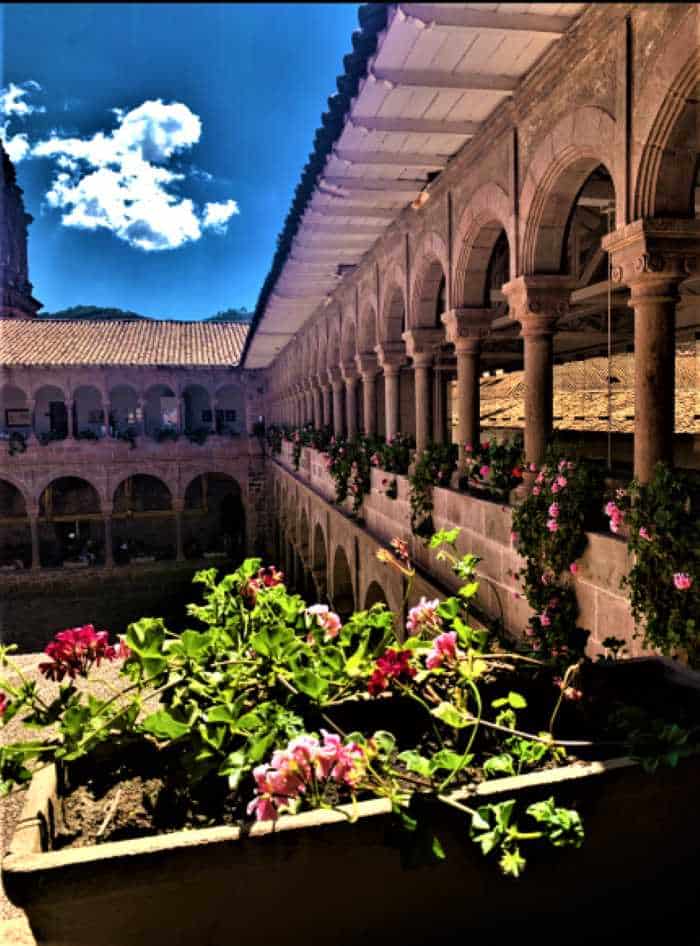
I’ve seen tourists leave their bags unzipped or dangling off their shoulders while distracted by the beauty of their surroundings—an easy target for a quick grab.
Dont do that! Like in any crowded city, pickpocketing and petty theft are a risk in Cusco, especially in busy areas like markets, bus stations, and tourist sites.
Keep your belongings secure, wear a crossbody bag, and always be aware of your surroundings – and contribute to keeping the crime rate down.
Don’t Leave Your Phone on the Table While Eating
This one is surprisingly common! You sit down to enjoy a meal, place your phone on the table, and before you know it, someone distracts you while an accomplice snatches it.
Always keep your phone in your pocket or bag, and never leave it unattended, even for a moment.
Health and Environmental Cusco Safety for Tourists
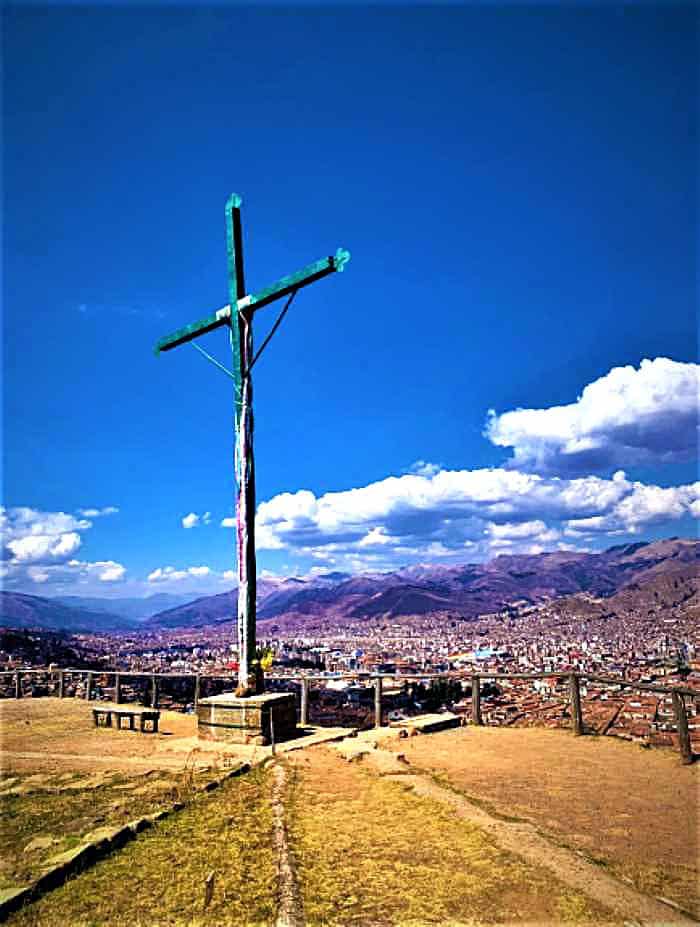
When traveling, it’s essential to prioritize your health and be mindful of the environmental factors that might affect your experience.
The high altitude is one of the most important aspects to consider in Cusco. Altitude sickness, also known as soroche, is a very real possibility when you arrive, and it can catch you off guard if you’re not prepared.
The city sits at a staggering 3,400 meters (11,152 feet) above sea level, so taking this seriously is important.
You might feel a bit light-headed, short of breath, or even nauseous as your body adjusts to the thinner air.
To prevent the effects of altitude sickness in Cusco, I recommend taking it slow during your first couple of days there. Give yourself time to acclimate before diving into more strenuous activities like hiking or exploring the nearby ruins and nature.
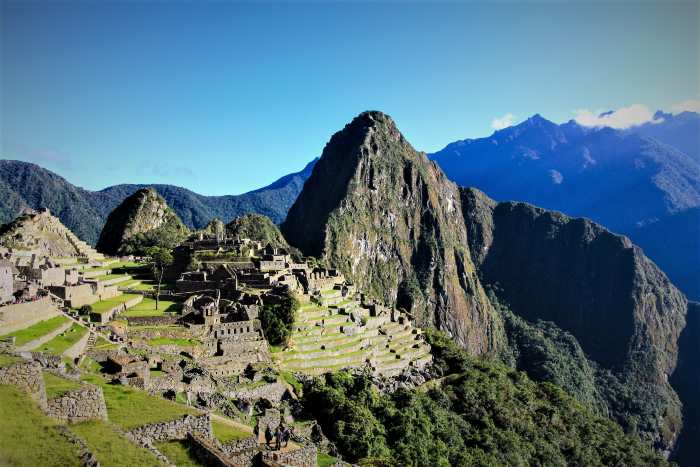
If you can, consider arriving from a lower altitude location first, such as the Sacred Valley, to help your body gradually adjust.
Drinking coca tea, chewing coca leaves, or eating coca candies is a local remedy against altitude sickness. Staying hydrated is also key, but remember to pace yourself and listen to your body.
But altitude sickness in Cusco isn’t the only health concern you should be aware of.
Cusco’s sun is much stronger than you might expect due to the altitude, so sun protection is a must—even on cloudy days.
Wear sunscreen, a hat, and sunglasses to avoid getting burned, and stay hydrated, as dehydration can also worsen altitude symptoms.
In the rainy season, from December through March, you might also encounter heavy rains, so bring waterproof clothing.
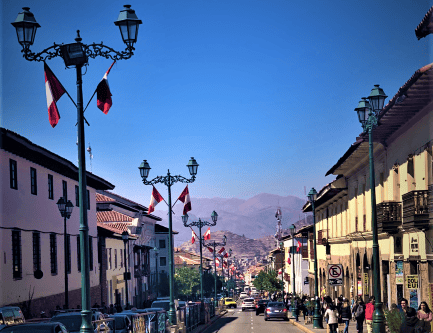
If you’re concerned about encountering street dogs in Cusco, that is not a common problem to worry about here.
I had the same thought when I first arrived, but I quickly realized that most of the dogs are friendly and used to people.
You’ll see them lounging around or casually wandering the streets, but they don’t bother anyone. Many of them are well cared for by locals.
Lastly, keep in mind that the tap water in Cusco isn’t drinkable, so you can buy water bottles or bring a smart water reusable bottle with a filter to get water from anywhere. With that said, never buy salads at restaurants!
Is Cusco Safe for Adventure Activities?

Yeah, Cusco is a vibrant and generally safe place, even for those who crave a little adventure.
But like any place, and having spent time in Cusco, the following tips are essential.
Trekking and Hiking Safety Peru: Rainbow Mountain and Machu Picchu Safety Tips
Before embarking on a trek to Machu Picchu (on the UNESCO World Heritage list) or Rainbow Mountain, there’s one thing you need to know—preparation is absolutely key.
These adventures are incredible, but the high altitude can hit you harder than you expect. Trust me, it’s not something you want to take lightly.
Make sure to spend at least two days in Cusco adjusting to the altitude before you tackle any big hikes. Your body needs that time to acclimate, and rushing it could set you up for a much tougher experience.
And, seriously, do yourself a favor—avoid alcohol before your trek.
I know it’s tempting to enjoy a celebratory drink in such a vibrant city but believe me, hiking with a hangover is pure misery.

I learned the hard way when I decided to take on Rainbow Mountain after a night out.
Let’s just say, there was a moment when I thought I wasn’t going to make it. My advice? Stay hydrated, rest up, and leave the partying for after your hike—you’ll thank me later.
Another crucial tip: check the weather every single time before you head out, and remember to adjust your packing list accordingly.
Cusco’s weather can be unpredictable, and you don’t want to be caught halfway up a mountain when an unexpected rainstorm hits.
Pack layers and invest in a good pair of hiking boots. And don’t forget a lightweight waterproof jacket—it’ll be your best friend if the skies decide to open up.
Hopefully, this will help you balance your outdoors adventure-safety concerns.
Tour Guide Recommendations: Why Choosing Reputable Operators Matters for Your Safety
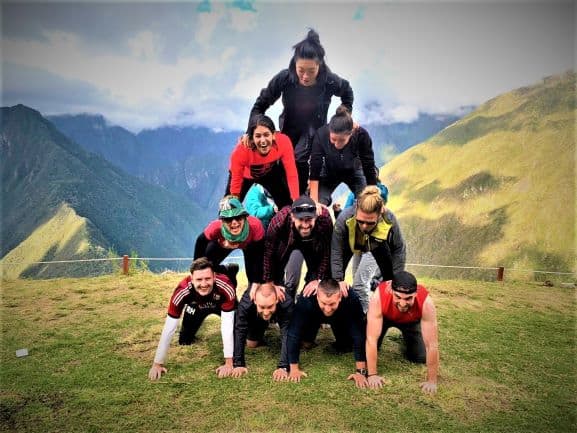
This brings me to another important point—your choice of tour operators can make or break your trip. It might be tempting to go for the cheapest option, but it’s worth investing in a reputable operator.
Safety standards can vary, and choosing a local guide, tour company, or travel agency with a solid reputation is the best way to ensure you’re in good hands.
When I booked my trek, I researched operators that prioritize not only the experience but also my well-being.
A good guide knows the terrain, understands the risks, and, most importantly, will look out for you if you get sick or things don’t go as planned.
Make sure your guides are licensed, knowledgeable about the local environment, and equipped to handle emergencies.
If you’re unsure and have not pre-booked any tours, ask around—other travelers, locals, or even your accommodation can point you in the right direction.
FAQs About Cusco
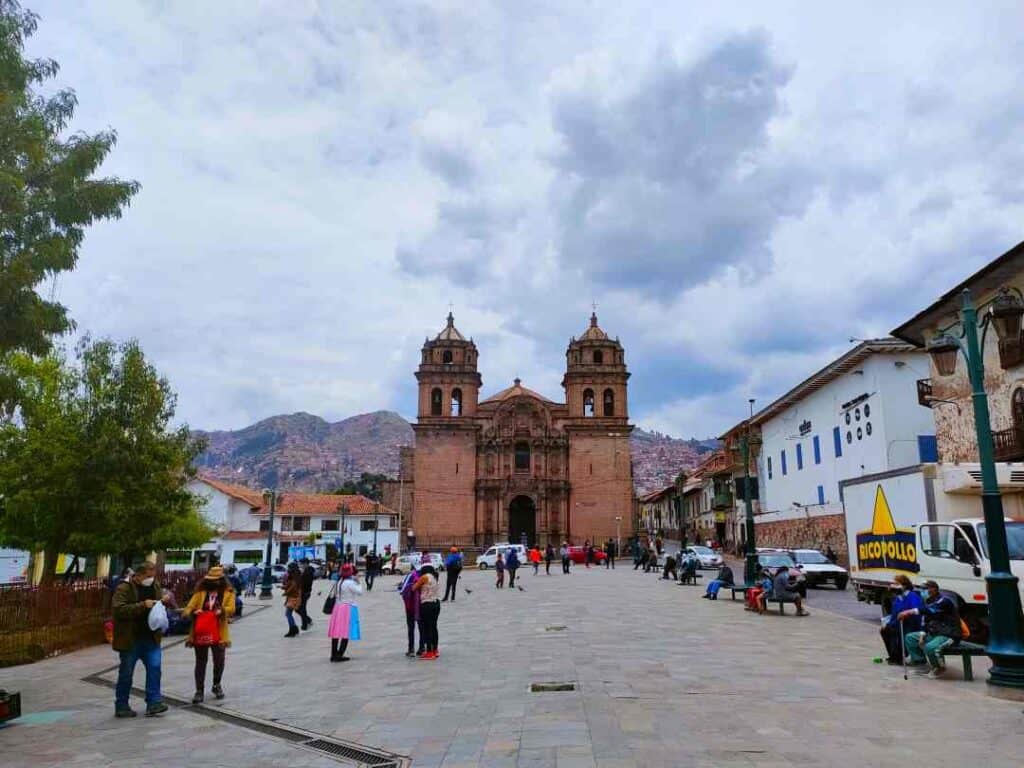
Is Cusco Safe for Solo Female Travelers?
Yes, it is! Cusco is generally a safe destination for solo female travelers, and many women visit here without any problems, myself included.
I walked around Cusco at night (sober), I felt completely safe and I had no bad or even remotely annoying experiences.
However, like in any unfamiliar city, it’s important to stay aware of your surroundings, especially at night or in less crowded aka more remote areas of Cusco. Cusco safety for you as a traveler is a matter of common sense, doing your research, and getting local knowledge.
If I have any concerns or questions, I just ask people, such as taxi drivers and hotel or restaurant staff, and most people are happy to provide their insights and advice!
What Areas Should You Avoid in Cusco?
While most of Cusco is safe for travelers, there are some areas you’ll want to avoid, particularly alone at night.
Here’s a list of neighborhoods in Cusco and streets that are best to steer clear of, especially once the sun sets:
- Zarzuela: This area can feel a little off, and it’s not recommended to wander here after dark.
- Almudena: The home of the beautiful Almudena cemetery, locals advise you to visit here in the daytime.
- San Cristobal Neighborhood: Known for its views, but the streets can become quite deserted at night, which is not great for a solo traveler.
- St. Geronimo: Another area you want to visit in daylight hours.
- Libertad: This neighborhood can become quite isolated in the evening, so be cautious.
- San Sebastián: Like other neighborhoods on this list, San Sebastián is best visited in the daytime.
- Poroy: A bit off the beaten path, so visit during the daytime (or with a registered taxi)
- Santiago: Best visited in the daytime, but be cautious in the evening hours.
- Wanchaq: Even though it’s popular, Wanchaq has a bit of a bad reputation, so just be extra vigilant if you find yourself here.
When it comes to the historic center of Cusco, there are a few streets that travelers should approach with caution, particularly at night.
Suecia, Huaynapata, and Resbalosa streets may look charming during the day, but they can be eerily quiet and less safe after dark.
Is It Safe to Walk Around Cusco at Night?
You might wonder if walking around Cusco after dark is safe. Is Cusco safe for tourists?And yeah, it is!
There’s usually a lively, welcoming atmosphere, even at night, especially in the main tourist areas, where most hotels, hostels, and restaurants are concentrated.
I’ve strolled through Cusco’s heart in the evening, and while I felt comfortable, I always stayed aware of my surroundings.
That said, I recommend having a quick chat with your accommodation’s receptionist or hotel staff before you head out.
They’ll know the latest on which areas are best avoided and can give you peace of mind, especially if you’re planning to explore alone.
It’s always better to get that local insight—just a small step to ensure you enjoy your evening without worry!
Is Altitude a Safety Concern in Cusco?
Altitude sickness in Cusco is no joke; I’ve learned that, too, the hard way!
When my friend and I touched down in Cusco after flying in from Lima, she immediately started feeling the effects. It hit her hard, and I could see how uncomfortable she was. That’s when I realized just how serious altitude sickness can be.
It’s crucial to give your body time to adjust to the altitude. Rushing things won’t do you any favors up here!
Take it slow, breathe deeply, and most importantly—stay hydrated. Indeed, water is your best friend at this altitude.
LOCAL TRAVEL TIPS: Here’s something I didn’t expect to love, but it truly works wonders—coca tea.
You’ll find it served everywhere in Cusco, and it’s a lifesaver.
If you’re feeling adventurous (or desperate, like we were), you can also chew coca leaves or try coca candy. Yes, they have candies made from coca leaves, and they’re surprisingly effective.
Not only will they help you combat the effects of the altitude, but they also give you a little energy boost, which is always welcome when you’re exploring a new place.
Wrap-Up Is Cusco Safe
Now you have been introduced to any and every possible situation in Cusco, more or less probable, that you should have thought about before you go!
The essence is that Cusco is a fairly safe city to visit in Peru, including for solo female travelers.
When you have read all these tips, advice, and recommendations, you are well equipped to travel even safer to Cusco, as you have the tools to avoid any remotely risky or uncomfortable situation.
Related blog posts:
Review Inca Trail Trek 4 Days: My Epic Inca Trail Experience
Ultimate Inca Trail Packing List From A Hiker
17 Incredible Famous Landmarks In Peru That Are a Must-See!
Author: Giorgy from Sabiduri
Giorgy and her partner, Patricio, are the founders of Sabiduri. The best spiritual blog on a mission to empower every person to self-discover their spiritual awakening power and navigate with ease in the world of spirituality. They are also the authors of “The Light in My Wild Eyes,” a book revealing the truth of how travel changes us, and their Sabiduri Shop shares a piece of their own brand, helping people to feel understood.
